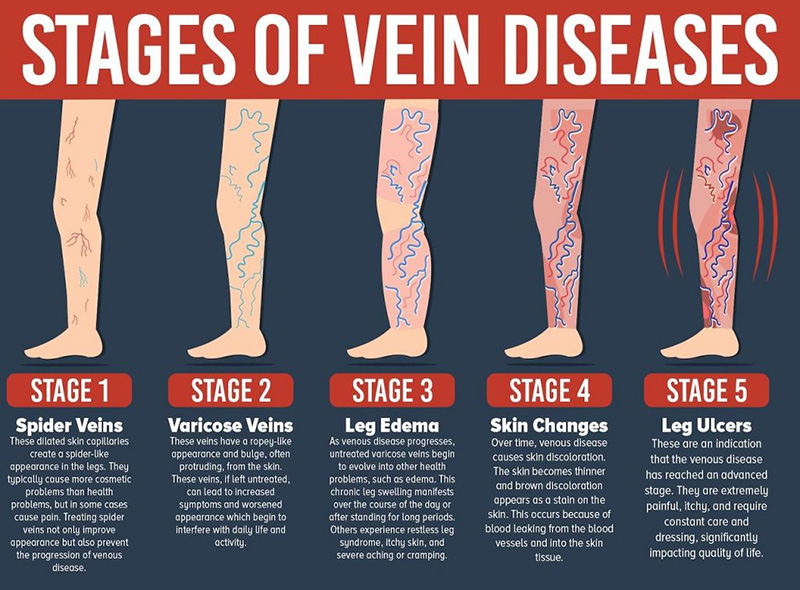
What are Varicose Veins?
When the skin veins in the legs become prominent, are bulging and tortuous, they are referred to as varicose veins. In earlier stages, the minute veins of the skin become prominent much before the bigger veins become enlarged and twisted. They are referred to as “spider veins”. Thus, spider veins are an earlier stage of varicose veins. The cause of varicose veins is usually a nonfunctioning valve. Valves are essential for proper functioning of leg veins as they help move the blood toward the heart against gravity. When the valves don’t function properly, they allow the blood to “leak back” which causes stagnation of the blood in the skin veins, thus resulting in their enlargement and twisting.
What are the symptoms of Varicose Veins?
Symptoms are varied and patients may feel different symptoms. Most common symptoms are pain or aching in the leg, especially after standing for varied periods of time, commonly toward the end of the day. Patients may also feel constant urge to shift the position of legs, so called “restless legs”. Burning, itching, tingling, numbness in the affected leg may also be symptoms. Swelling around the ankles, discoloration of the skin, painful, non healing wounds in the legs can also be manifestations of varicose veins.
How are Varicose Veins diagnosed?
Venous disease can be easily diagnosed using an ultrasound technique called Venous Duplex study. The test involves imaging the veins and evaluating the valve function by color flow and pulsed wave doppler technique. The “leak back” or reflux can be detected in this fashion. There are other modalities such as plethysmography but duplex study is now the gold standard test for diagnosing venous disease.
How are Varicose Veins treated?
Treatment for varicose veins depends on many patient factors. Conservative therapy involves Compression stockings. These are the mainstay of treatment of venous disease.
Other invasive treatment modalities involve the convention approach of surgical approach (“stripping” of the Veins). More recent advances involve minimally invasive approaches such as thermal ablation of the vein using either Laser or Radio Frequency waves (so called “EndoVenous Laser Ablation”). Some times, other techniques such as “Foam Sclerotherapy” and “Micro Phlebectomy” are also employed.
Advantages of EndoVenous Laser Ablation
incisions and scars, general anesthesia. The procedure involves only needle puncture. .
And avoids incisions and is much less painful and more comfortable for patients. Patient is conscious throughout the procedure and can immediately get up and go about their normal routines at the end of the procedure. There is no recovery period or bed rest etc. There is extremely low risk of infection and no risk of bleeding. The success rate of this procedure is virtually 100% with extremely low risk of complications if performed by experienced operators.


